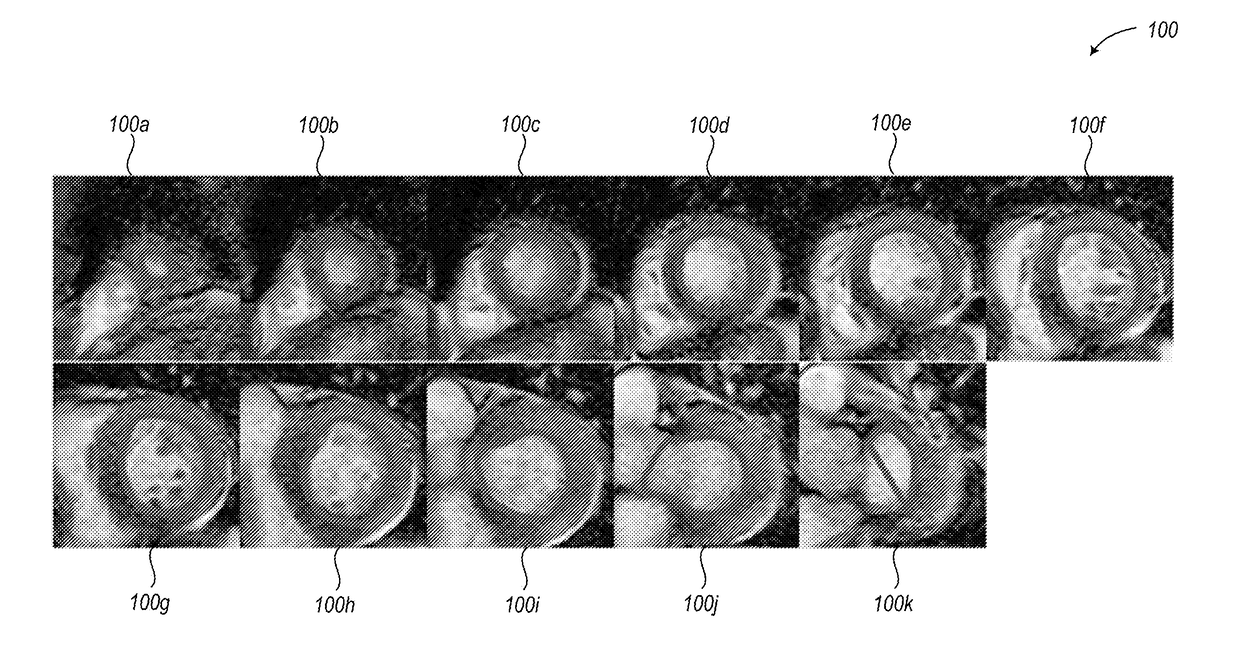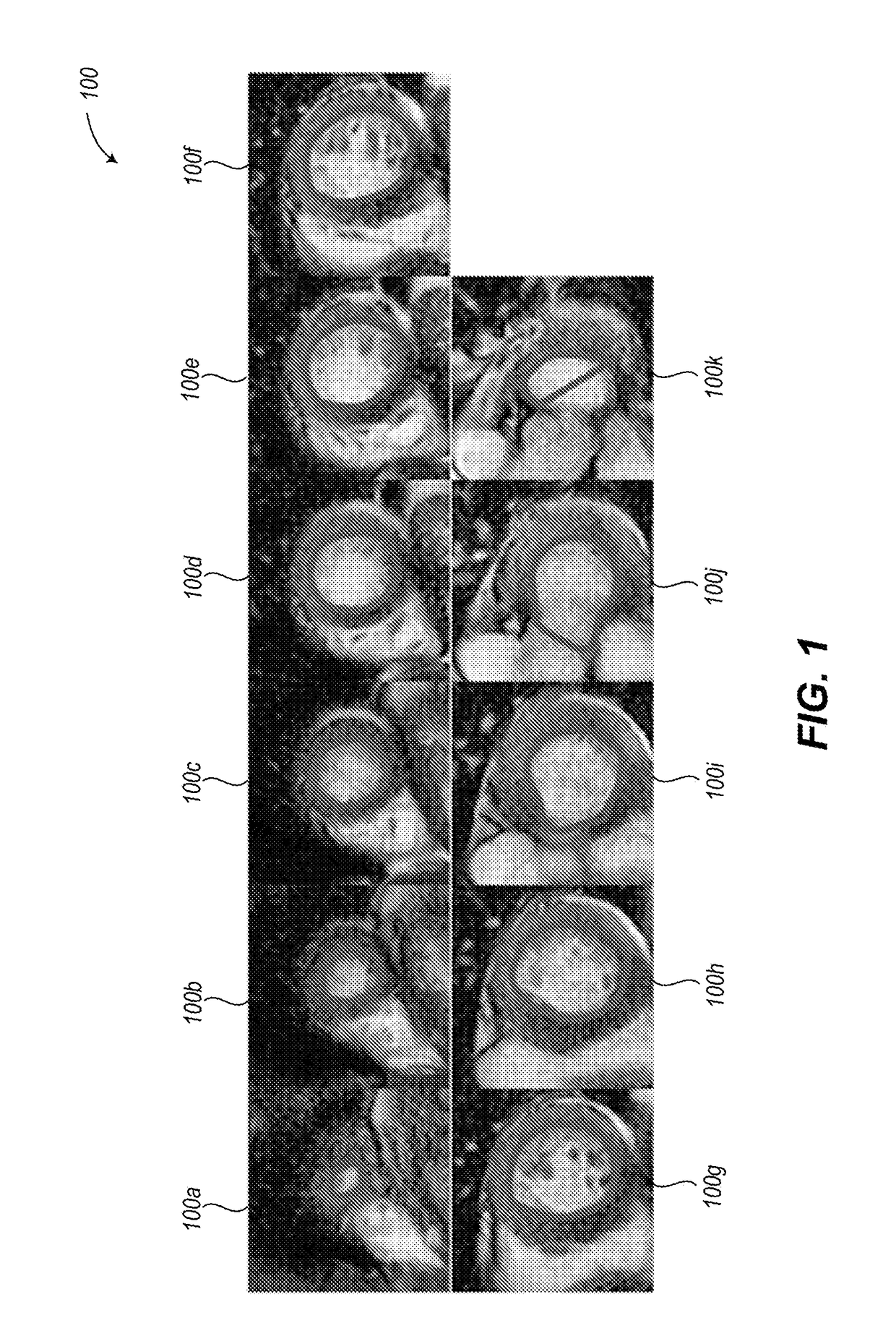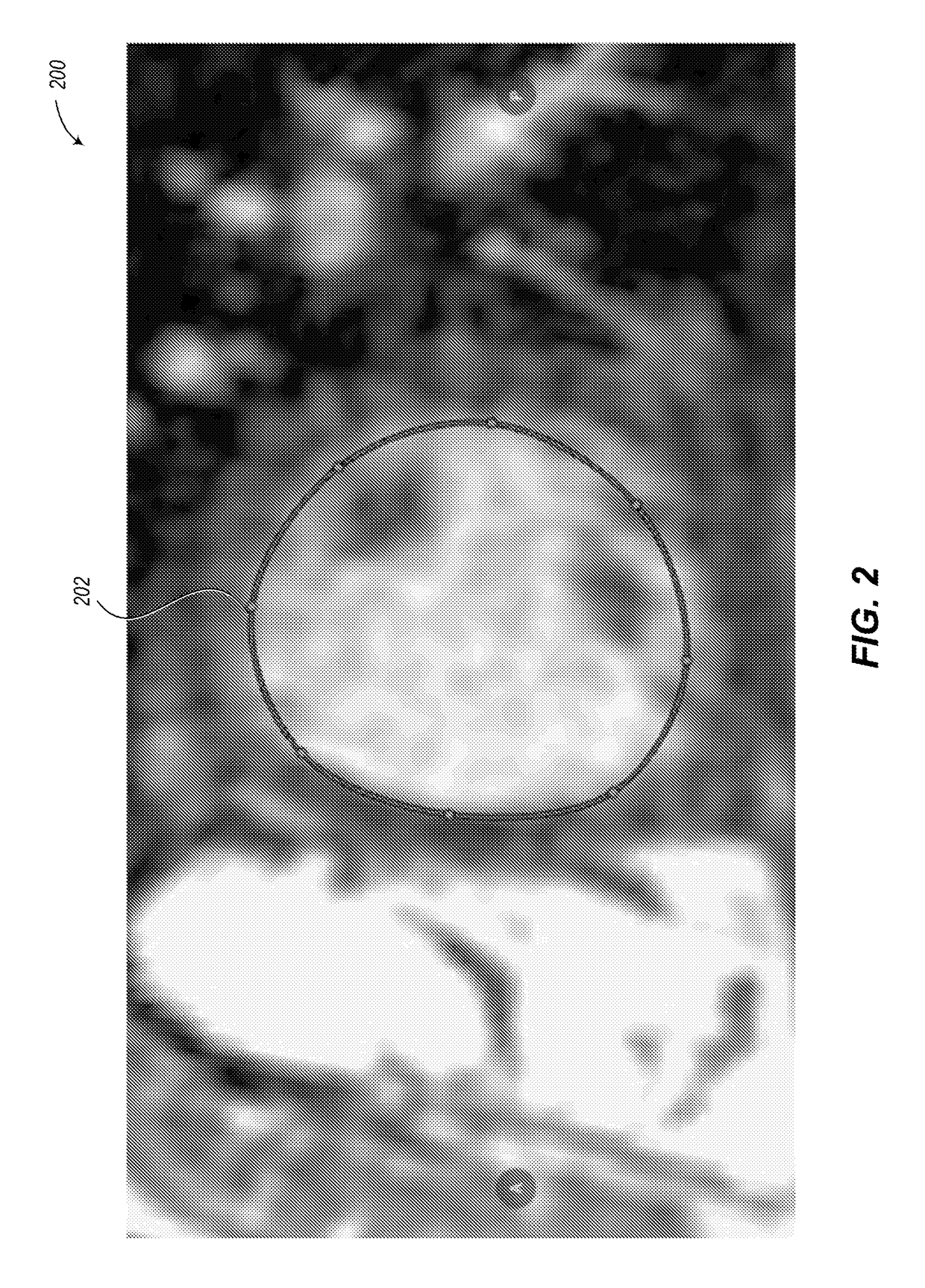Abnormally low EF readings are often associated with
heart failure.
Although some semi-automated contour placement tools exist (e.g., using an active contours or “snakes”
algorithm), these still typically require some manual adjustment of the contours, particularly with images that have
noise or artifacts.
The most obvious consequence of the onerousness of this process is that reading cardiac MRI studies is expensive.
Another important consequence is that contour-based measurements are generally not performed unless absolutely necessary, which limits the
diagnostic information that can be extracted from each performed cardiac MRI study.
Although the snakes
algorithm is common, and although modifying its resulting contours can be significantly faster than generating contours from scratch, the snakes
algorithm has several significant disadvantages.
The cost function for snakes typically awards credit when the contour overlaps edges in the image; however, there is no way to inform the algorithm that the edge detected is the one desired; e.g., there is no explicit differentiation between the
endocardium versus the border of other anatomical entities (e.g., the other
ventricle, the lungs, the liver).
Further, the snakes algorithm is greedy.
However,
gradient descent, and many similar optimization algorithms, are susceptible to getting stuck in local minima of the cost function.
The snakes algorithm generally has only a few dozen tunable parameters, and therefore doesn't have the capacity to represent a diverse set of possible images on which segmentation is desired.
Because of the great diversity on recorded images and the small number of tunable parameters, a snakes algorithm can only perform well on a small subset of “well-behaved” cases.
However, the snakes algorithm cannot be adequately tuned to work on more challenging cases.
However, because the muscles are numerous and small, excluding them from a manual contour requires significantly more care to be taken when creating the contour, dramatically increasing the onerousness of the process.
As a result, when creating manual contours, the papillary muscles are typically included within the
endocardium contour, resulting in a modest overestimate of the ventricular
blood volume.
Automated or semi-automated utilities may speed up the process of excluding the papillary muscles from the
endocardium contour, but they have significant caveats.
The snakes algorithm (discussed above) is not appropriate for excluding the papillary muscles at
end diastole because its canonical formulation only allows for
contouring of a single connected region without holes.
In short, it is not possible for the canonical snakes algorithm to be used to segment the
blood pool and exclude the papillary muscles at
end diastole.
Therefore, in the standard formulation, the snakes algorithm can only include the papillary muscles at
end diastole and only exclude them at
end systole, resulting in inconsistent measurements of
blood pool volume over the course of a
cardiac cycle.
This is a major limitation of the snakes algorithm, preventing clinical use of its output without significant correction by the user.
Flood fill could also be used to include papillary muscles from the endocardium segmentation at end
diastole; however, at
end systole, because the bulk of the papillary muscles are connected to the myocardium (making the two regions nearly indistinguishable from one another),
flood fill cannot be used to include the papillary muscles within the endocardium segmentation.
Beyond the inability to distinguish papillary muscles from myocardium at
end systole, the major
disadvantage of
flood fill is that, though it may significantly reduce the effort required for the segmentation process when compared to a fully-
manual segmentation, it still requires a great deal of
user input to dynamically determine the
flood fill gradient and distance thresholds.
One major
disadvantage of performing segmentations on the SAX stack is that the SAX plane is nearly parallel to the plane of the mitral and tricuspid valves.
First, the valves are very difficult to distinguish on slices from the SAX stack.
Further, even if the LAX view is available, it may be difficult to tell on the SAX slice where the valve is located, and therefore, where the segmentation of the
ventricle should end, since the
ventricle and atrium have similar
signal intensities.
Segmentation near the base of the heart is therefore one of the major
sources of error for ventricular segmentation.
One limitation of LandMarkDetect is the lack of method to
handle missing landmarks.
Another limitation is the absence of
hyperparameter search except for the kernel and layer size.
Yet another limitation is the fixed
upsampling layer with no parameter to learn.
Further, LandMarkDetect relies on a limited pre-
processing strategy which consists in removing the mean (i.e. centering the input data) of the 3D image.
 Login to View More
Login to View More  Login to View More
Login to View More 


